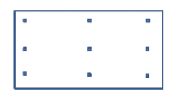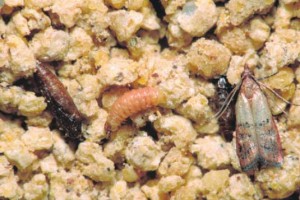A client with a large warehouse facility calls complaining of moths fluttering around. When asked to describe them, he says they’re small, about 0.5- to 0.75-in. long. Some looked like they had two colors on their wings.
Once you arrive at the account, you confirm what you already suspect: Indianmeal moth (IMM, Plodia interpunctella). Being well versed in integrated pest management (IPM) techniques, you know that the only way you will ever get control is to identify the infested material and remove it from the facility. But where do you start?
According to your reference sources, you know IMM prefers grains and dried fruits — among many other types of food. In looking around, you discover most of the products in the area consist of what IMM would eat.
Let’s start with interview questions for the client: How long have IMM been present? What stock came in just before IMM started showing up? Is there any product that’s been here for a number of months? The answers to these questions lead you to areas that must be inspected.
Now you have to narrow down the potential suspects. There are clues to look for; find them and they should help. Is there webbing present in any of the rack systems or on bags of product? Are there insects caught in any spider webs? These will narrow the possible targets.
After a thorough inspection, you eliminate a portion of the facility that offers no visual clues or insects present. The other areas are too dense with product to get closer to the solution.
What next? Pheromone traps. From your training, you remember pheromone traps are often species-specific. You want to make sure the ones you use are for IMM.

Figure 1. Draw a simple diagram of the area, marking where support beams and racks are located. Update the diagram as you take away undisturbed traps, until you zero in on the affected area.
Where should they go? First you draw a simple diagram of the area, marking the location of the support beams and racks on the diagram. This will be used to help you remember where the traps are placed. Starting in a logical grid pattern, place pheromone traps outward and mark their locations on the diagram. Number each trap and return the next day to check them.
When you return, you find three traps had captures. Now you can remove all but those three and start reducing the area of the traps until you find the product that is infested (see Fig. 1).
Move the three without X’s toward one another and check again tomorrow. Keep moving them closer until you are on top of the problem.
You can reach Frank Meek, international technical and training director for Orkin, at fmeek@rollins.com.

Leave A Comment